DEFENCE Indigenous Indian drones
Is India’s military drone industry ready to go?
NEELAM MATTHEWS looks at attempts to boost the home Indian drone market for military applications.
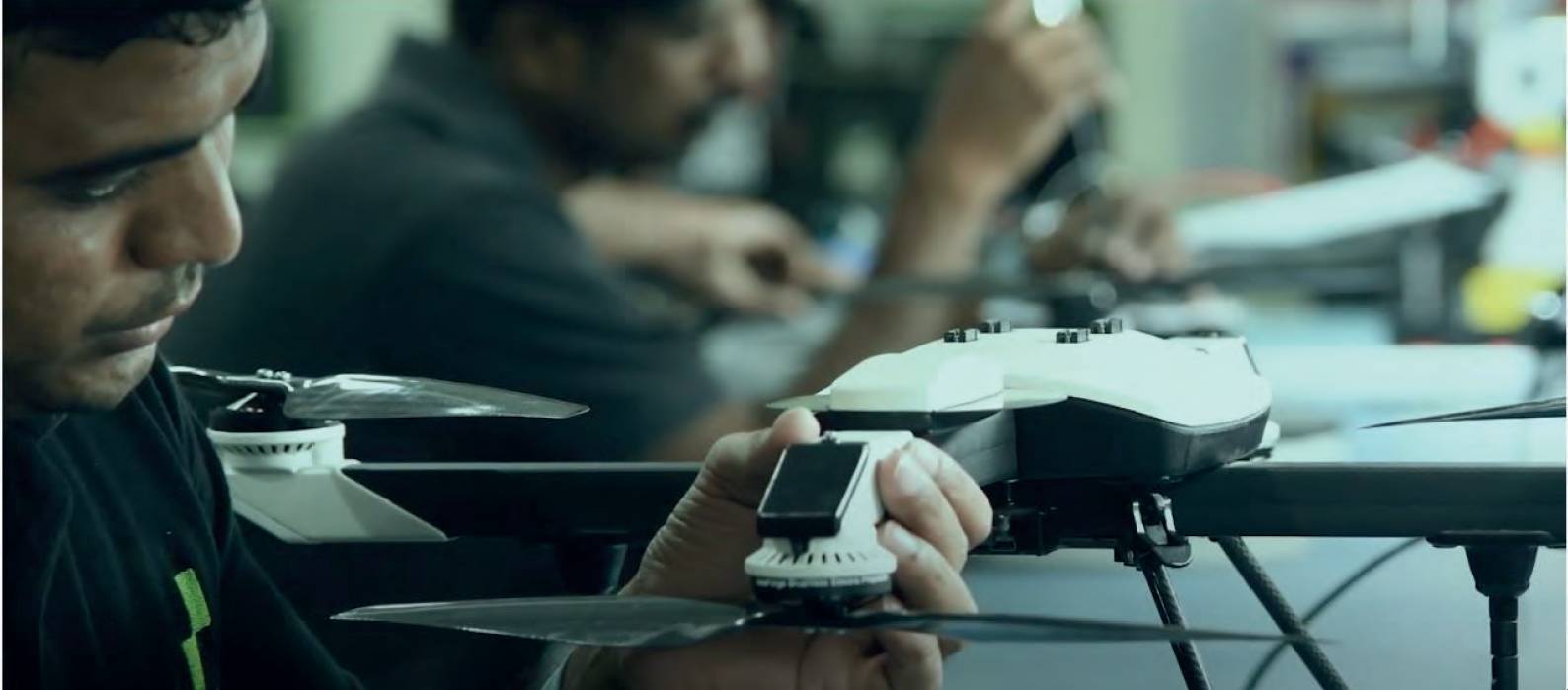 IdeaForge
IdeaForge
India is well on the road to innovation. Change in insular mindsets in the military, until recently, comfortable with legacy systems, combined with the rise in defence start-ups, has energised thinking, resulting in forward-looking government policies.
Serious attempts to boost indigenous military (and civil) drone industry through initiatives to encourage the private industry, in addition to the present programmes and projects by the DRDO, were amplified in the federal budget declared for the financial year 2022-23 by Finance Minister Nirmala Sitharaman on 1 February.
India first used military drones during the 1999 Kargil War with Pakistan when Israel supplied India with IAI Heron and Searcher drones for reconnaissance. Since then, India has procured numerous Israeli drones and is presently negotiating for US military uncrewed aircraft. Under a fast forward emergency procurement clause that mandates deliveries to be made within a year, it has started leasing and buying uncrewed aerial systems of which it has found the most critical need. Simultaneously, there is an effort to encourage local start-ups to get into the business for expeditious delivery, not often the wont of sluggish, bureaucratic government-owned companies.
The army has been the largest buyer, followed by the navy and air force. A move for integrated buys in the armed forces remains in its infancy.
Escalation in the conflict since mid-April 2020 between China and India on the eastern border of Ladakh has compelled the nation to modernise forces and equipment speedily. Pakistan too, is upping the ante. For the first time, with an intent to wreck infrastructure and create chaos, last summer, two suspected ‘Made in China’ GPS drones dropped RDX and nitrate explosives laced with ballbearings IEDS on the Indian Air Force (IAF) station in Jammu.
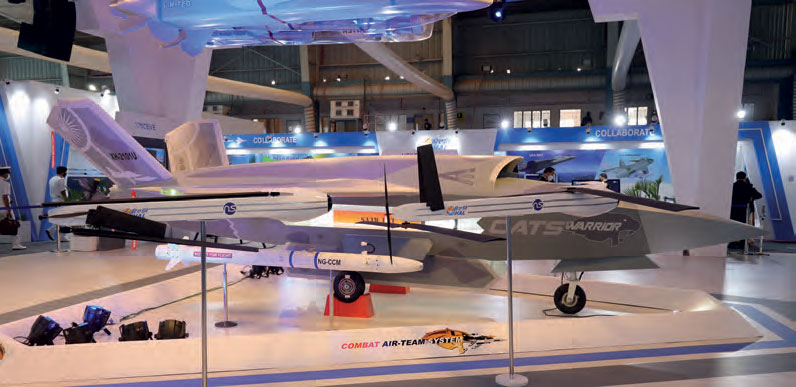 Hindustan Aeronautics Limited (HAL) CATS ‘loyal wingman’ was revealed at Aero India 2021. HAL
Hindustan Aeronautics Limited (HAL) CATS ‘loyal wingman’ was revealed at Aero India 2021. HAL
Months later, this was followed by the Border Security Force hexa-copter with four power batteries, weighing around 23kg and able to carry a payload of around 10kg. Director General Pankaj Kumar Singh confirmed 67 drone sightings along the border in Punjab and Jammu: “These are by and large Chinese-made drones... they are very good... and carrying small payloads and in 95% of cases they are carrying drugs.”
China has augmented military infrastructure in the Tibet and Xinjiang regions along the border of India. Of concern is its development in drone warfare. An airbase in Xinjiang province is believed to have a ‘hypersonic’ drone and others, including Wing Loong (GJ-2), 48 of which have been sold to Pakistan – a perturbing issue. Autonomous take-off and landing, the multi-role Wing Loong-2, designed and produced by the Aviation Industry Corporation of China, is equipped with electronic reconnaissance and communication equipment for real-time high-resolution images.
With a long-range strike capability with a satellite link, it can carry small air-to-ground precision attack weapons and conduct reconnaissance and strike missions. To counter this, India’s military needs the competence to respond to disruptive technologies which it is doing. The Indian army was, incidentally, the first to acquire UAVs, in late 1990s from Israel and the Indian air force and navy followed.
Things have come a long way since the past decade when the army allegedly mistook planets Jupiter and Venus for Chinese surveillance drones. Today, the army is looking at a low-level light-weight radar in the mountainous area where surveillance is difficult due to the terrain that provides access to low-flying drones. The radar is included in the second list of ‘Make in India’ projects with a deadline after which imports will not be allowed. For this, the army will work in partnership with the industry.
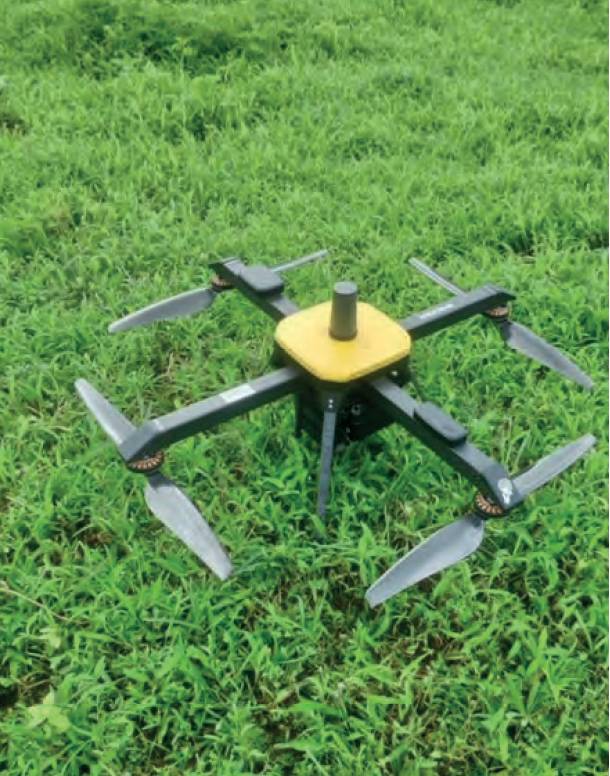 IdeaForge RYNO microdrone. IdeaForge APRIL
IdeaForge RYNO microdrone. IdeaForge APRIL
Army Chief General Manoj Mukund Naravane recently included surveillance and armed drones, swarms, robotics and counter-drone systems as a priority. In a $70m deal, the Indian army has positioned Israel Aerospace Industries four upgraded Israeli anti-jamming medium-altitude 30hr-endurance Heron II drones in Ladakh. Along with the Herons, the Indian Navy also uses Searcher Mk II, though the largest buyer continues to be the army. The infantry uses multifarious models of quadcopters designed by the Defence Research and Development Organisation (DRDO) and manufactured by private companies for tactical surveillance, mostly on the borders of Kashmir.
The Indian army that has the largest requirement took the lead in 2021, awarding domestic startups with orders. Despite being of small value, it has instilled confidence in the high-tech ability beginning to take place in the country.
Moving into the drone SWARM (smart warfighting array of reconfigured modules) arena has become imperative for India as it faces continuous strife from its powerful neighbour. A $15m order was given to Bengaluru-based start-up NewSpace Research and Technologies to supply a system capable of surveillance, electronic warfare and kinetic attack. “India is the first country to develop offensive drone combat swarm capability using different classes of drones,” Sameer Joshi, founder of Bangalore-based NewSpace Technologies, told AEROSPACE.
The ALFA (air-launched flexible asset) SWARM drone system was demonstrated in January last year at the army day in New Delhi. Using 75 drones of various weight classes from 5kg to 30kg, each uncrewed system was heterogeneously equipped with artificial intelligence (AI) embedded algorithms, on-board computers, photometry – driven by continuous satellite feeds. They included kamikaze drones that self-destructed after hitting 13 targets.
Bengaluru-based Alpha Design, in a joint venture with Israel’s Elbit, was awarded an order for 100 SkyStriker loitering munitions capable of long-range precise tactical strikes.
The army also contracted 48 cargo-carrying 30kg hexacopter drones for use in high-altitude areas, developed by Indian company Raphe mPhibr. The MR-20 drones will be used for transporting food and essentials to soldiers positioned at high altitudes. Two years ago, the Chinese army had disseminated propaganda on similar drones bringing hot meals to soldiers.
Friction with China has the Indian Army wanting more of start-up ideaForge’s high-altitude Switch UAV variant. Exercising its option to the $20m contract last year for the vertical take-off and landing (VTOL) and fixed-wing hybrid uncrewed aerial vehicle delivered within the deadline, the repeat order given by the army on 24 Jan is to be completed in a similar rigorous timeframe, as earlier. The company refused to reveal numbers ordered.
With the success of the Switch, the All-Terrain Dominator by ideaForge, India’s small drone industry is slowly reaching maturity. The under 7kg in weight, GPS-aided 2.6m × 1.8m drone with an endurance of over two hours with a 15km range, will provide the army with live visual and thermal terrain surveillance, infiltration/exfiltration detection, mission reconnaissance and real-time counter-intelligence. The service ceiling of 6,000m makes it an ideal fit as: “every base camp is located at 5,000m,” said an army official.
“Switch drones have high endurance as seen in the trials from desert heat to punishing mountainous altitudes... They are stable, robust, fast and easy to carry, handle and deploy,” said Kruthi Aramanamada, General Manager. Talks are on with the Indian navy for an ‘optimised’ version as the small size will be beneficial for parking it on small ships with restricted space, she explained.
Rajnath Singh Minister of Defence last year launched the (classified) ‘Integrated Uncrewed Road Map for Indian navy’, to chart out a capability development plan for the Indian navy. The IN budget this year was also increased by 43% over last year to enhance capabilities in the Indian Ocean region (IOR). The need for swift procurement led to the Defence Acquisition Procedure 2020 to introduce for the first time an option for leasing military platforms.
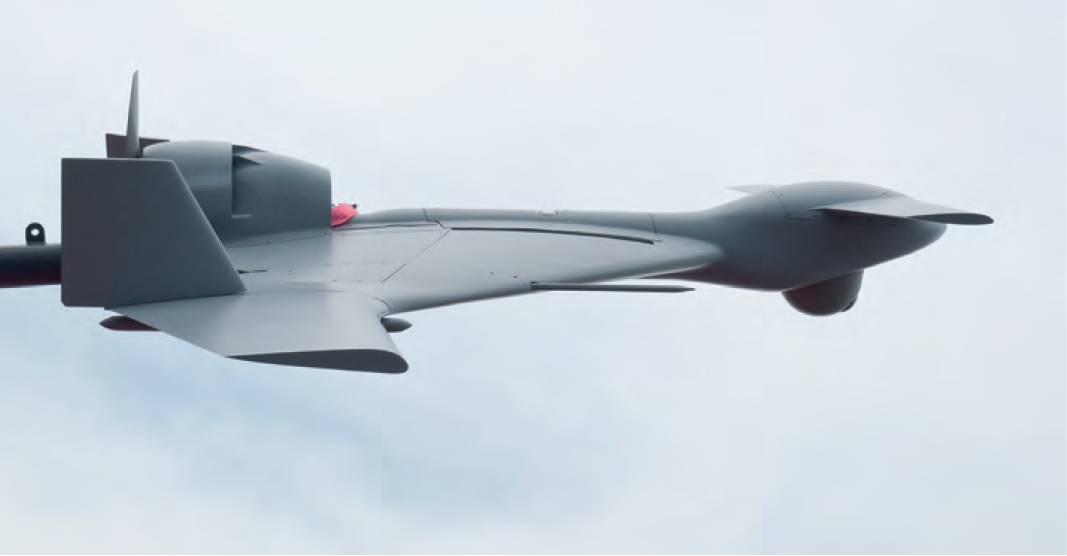 The IAI Harpy ‘kamikaze’ drone. Julian Herzog
The IAI Harpy ‘kamikaze’ drone. Julian Herzog
The Indian Navy that has the Herons for its long-range offshore requirements, in late 2020 leased two General Atomics Aeronautical Systems, Inc MQ-9B pre-production high-altitude long-endurance (HALE) Sea Guardians to bolster its maritime ISR capabilities. A $3bn deal for 30 Predators – 10 each for the IN, army and air force – is awaited. The Predators can be linked with the P-8i multirole maritime ASW, as well as the MH-60R helicopters of the IN on order.
Former Chief of the Naval Staff, Admiral Karambir Singh, had in December 2020 identified underwater domain awareness and the use of uncrewed underwater vehicles (UUVs) in place of minesweepers. Larsen and Toubro is developing autonomous underwater vehicles, including the Amogh it exhibited at DefExpo 2020.
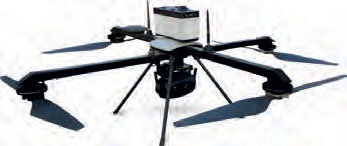 IdeaForge
IdeaForge
The Indian air force (IAF) uses Israel’s ‘Fire and Forget’ autonomous Harpy and the upgraded Harop, a loitering missile which serves as an electro-optically guided attack weapon. A swarm drone competition by the Indian Air Force now paves the way for two of the three Indian start-up winners to be awarded contracts for surveillance, attack and electronic warfare drones. The ‘swarm architecture’ award went to NewSpace Research and Technologies.
The ‘communication architecture’ award went to Delhi Technology University team in a tie-up with Adani Defence, while the ‘drone architecture’ went to Dhaksha Uncrewed Systems. “It was conceptualised to evolve proprietary design, development, manufacturing and production of ‘low-cost high-impact’ solutions for swarm drone technology, the IAF said in a statement.”
Following the drone attack in Jammu, the IAF has decided to procure ten anti-drone systems. A counter unarmed aircraft system “intended to detect, track, identify, designate and neutralise hostile UAS. Laser directed energy weapon is essentially required as a kill option,” has been awarded to Zen Technologies. The system will be equipped with a global navigation satellite jammer system (GNSS) and radio frequency jammers.
In a first, the MoD has initiated the high-altitude pseudo satellite (HAPS), a new genre of vehicles which fly in the stratosphere for months running on solar power. The Indian air force will be the end user. Start-up NewSpace Research and Technologies is to develop this cutting-edge UAV. The company is collaborating with Hindustan Aeronautics as part of this development effort. The expected timeline to fly the full-scale prototype with an endurance of three months at 65,000ft will be four years, said Joshi. Currently, the Airbus Zephyr and the BAE Systems Phasa 35 are world leaders in this class of UAVs.
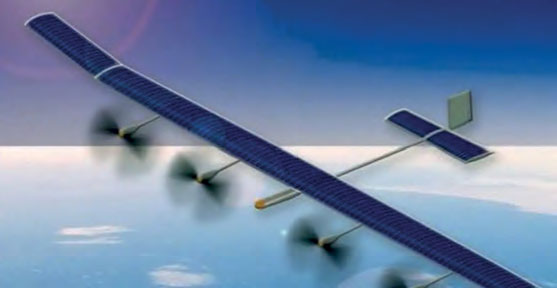 HAL is developing a HAPS long-endurance UAV. HAL
HAL is developing a HAPS long-endurance UAV. HAL
Meanwhile, DRDOs MALE twin turboprop-powered UAV Rustom-II with automatic take-off and landing facilities, “has crossed a milestone by reaching an altitude of 25,000ft and an endurance of ten hours,” said Satheesh Reddy, Secretary R&D and DRDO Chairman. With testing to be completed soon, HAL and BEL will start production. The armed forces are moving forward with major plans which include a proposal for 30 armed drones, 10 for each service, and is said to be in its advanced stages. Government-owned Bharat Electronics, meanwhile, has come up with an anti-drone radar-based system but it is still to be validated by users.
BEL has developed a tethered UAV, designed to fly 100m to secure airbases. It is capable of surveying up to 2km of radius in daylight and 1km at night. Hexacopter-20, a multirotor MALE UAV capable of performing collaborative missions with other multicopters, is in the design stage.
NewSpace Research & Technologies is working with the USAF’s Air Force Research Labs on co-operative research and development (CRADA) of air-launched drones. This is AFRL’s first international CRADA, an agreement signed between the government and a private company.
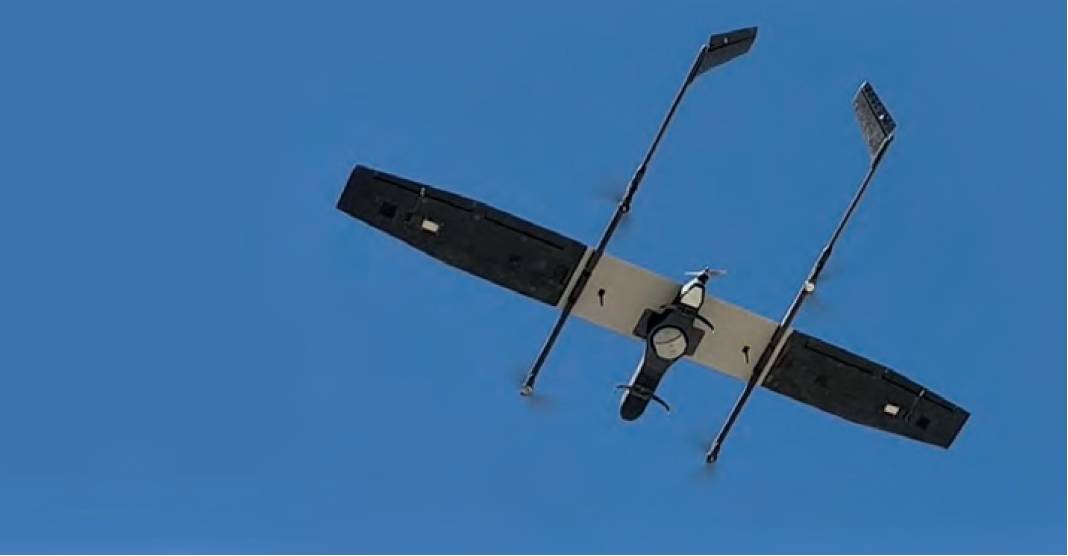 The ideaForge Switch is a high-altitude VTOl drone. IdeaForge
The ideaForge Switch is a high-altitude VTOl drone. IdeaForge
India’s MoD and the US Department of Defense have concluded a Project Agreement for air-launched uncrewed aerial vehicles (ALUAV) under the Joint Working Group Air Systems in the Defense Technology and Trade Initiative programme.
The collaboration is to co-develop an ALUAV prototype between the US Air Force Research Laboratory, Indian Air force and Defense Research and Development Organization (DRDO). The $22m project is for the “Design, Development, Demonstration, Test and Evaluation of technologies, including physical hardware, such as small UAVs, avionics, payload power, propulsion and launch systems through prototyping that meet the operational requirements of the Indian and US Air Forces.”
India’s Warrior loyal wingman UAV from HAL and its Smart Anti Airfield Weapon (SAAW) precision-guided missile are being taken seriously.
However, we learn it could take time to move from first flight to series production for the Warrior Combat Air Teaming System (CATS). A CATS simulator, with a Tejas–MAX cockpit as the mothership platform, was exhibited at Aero India 2021 to demonstrate fully integrated and autonomous wingman platforms, as well as UAV swarming. Warrior is being developed to go into combat as a loyal wingman drone with existing crewed fighter jets, like the Tejas Mk1 Light Combat Aircraft (LCA) and Rafale.
Joshi said: “In future, NewSpace is positioning products in the manned-unmanned teaming (MUM-T) domain with co-development with HAL towards the CATS, India’s maiden foray into the next-generation collaborative autonomy system for command of the skies in the next decade.”
There has been a concerted change in the past 22 years since India was delivered its first UAV by IAI. As of the end of 2020, Stockholm International Peace Research Institute’s (SIPRIs) Arms Transfers database notes India is the world’s third-largest importer of military UAVs after the UK and France, with a 6.8% share with 108 Searchers and 68 MALE Herons. Sales made in 2021 have not been taken into account. Pakistan, India’s Western neighbour, is the seventh-largest with 128 UAVs, according to SIPRI.
Challenges remain in the small UAV indigenous private sector despite the recent budget that allocates 25% of the R&D defence budget to startups. “We don’t make motors, sensors, controllers, engines or batteries,” said an official. To scale up the ‘Make in India’ ecosystem, opportunities are many for the industry for anti-drone systems, specifically, in the areas of sensors, phased array radar, radio frequency (RF) sensor, electro-optical and infrared systems, navigational satellite jammer systems, and RF jammer and laser directed energy weapon systems,” said a report by the Aerospace & Defence Consultants Association of India.